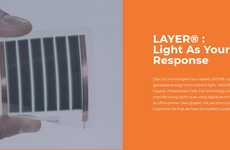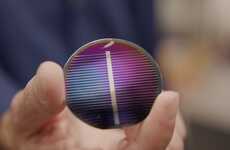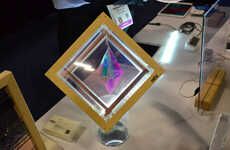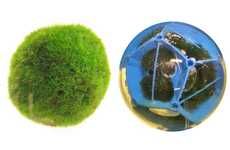
Bio-Solar Film Uses Algae Skeletons to Make Electricity
Katie Cordrey — April 13, 2009 — Eco
References: osufoundation.org & livescience
Single-celled marine life forms called diatoms are about to light up our lives.
Oregon State University and Portland State University have been working with the rigid-shelled creatures in a new type of solar cell that functions at the nanotechnology level.
Biology replaces conventional semiconductor application by using the skeletons of the tiny diatoms on a conductive glass surface to create a grid into which a soluble titanium dioxide is fed. The resulting film facilitates dye-sensitized technology in which photons bounce around pinball fashion striking dyes and producing electricity.
This technology is slightly more expensive than other dye-sensitized methods, but has the potential for triple the electrical output.
The video above explains the overall concept of dye-sensitized electrical generation.
Oregon State University and Portland State University have been working with the rigid-shelled creatures in a new type of solar cell that functions at the nanotechnology level.
Biology replaces conventional semiconductor application by using the skeletons of the tiny diatoms on a conductive glass surface to create a grid into which a soluble titanium dioxide is fed. The resulting film facilitates dye-sensitized technology in which photons bounce around pinball fashion striking dyes and producing electricity.
This technology is slightly more expensive than other dye-sensitized methods, but has the potential for triple the electrical output.
The video above explains the overall concept of dye-sensitized electrical generation.
Trend Themes
1. Bio-solar Film - Using diatom skeletons in a conductive grid creates a new type of solar cell that functions at the nanotechnology level with potential for triple the electrical output.
2. Dye-sensitized Technology - Facilitating photosensitive molecule reactions that efficiently generate electrical energy creates cost effective and environmentally friendly solar panel technology.
3. Nanotech Solar Panels - Using nanotechnology in solar panel technology increases efficiency and output that creates new industry opportunities.
Industry Implications
1. Renewable Energy Industry - Adopting nanotech solar panels that utilize dye-sensitized nanostructured semiconductors that have higher output would be a disruption in the renewable energy industry.
2. Technology Industry - The use of nanotechnology in the development of dye sensitized nanocrystals in next-generation photovoltaic technologies would disrupt the technology industry.
3. Materials Science Industry - The development of diatom bio-solar film technology for solar panels would disrupt the materials science industry's manufacturing processes.
5.3
Score
Popularity
Activity
Freshness















